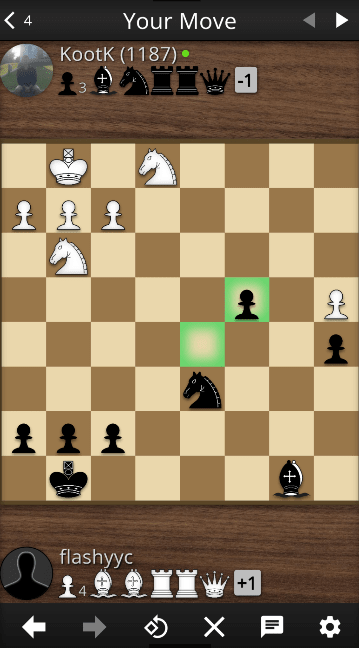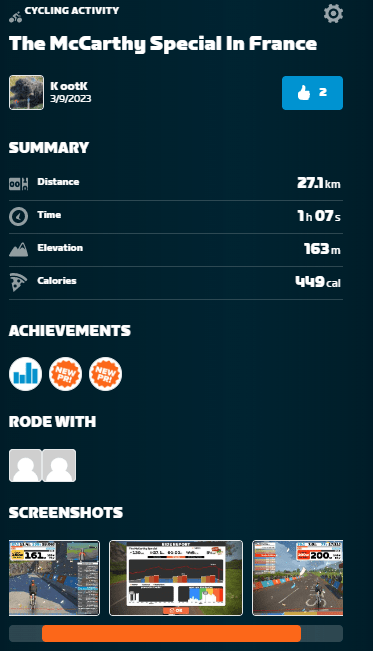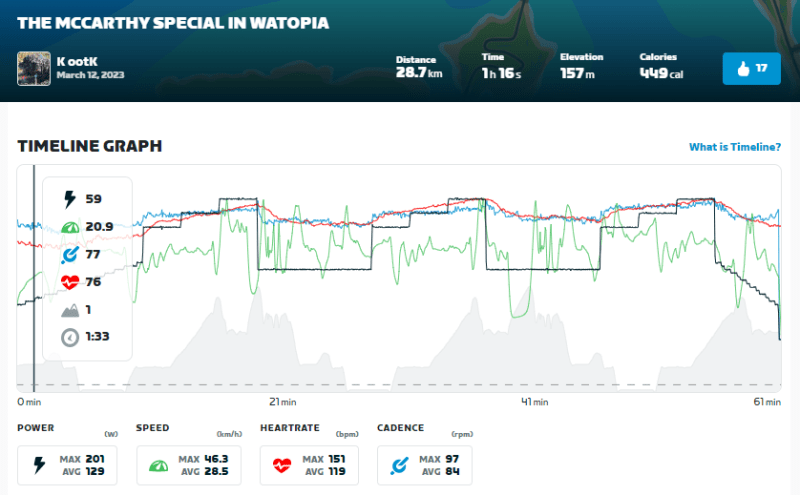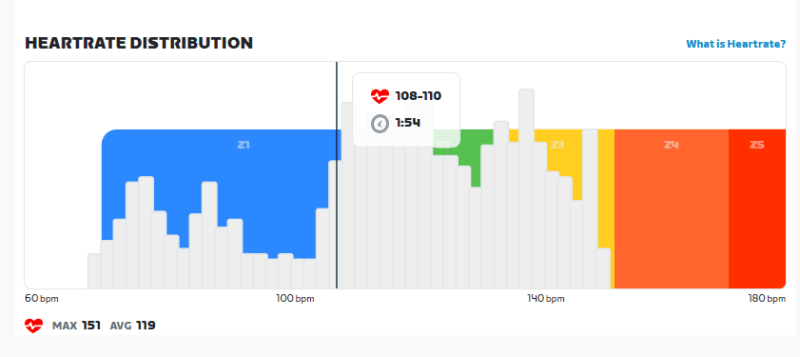phamENG said:
What is this Zwift? ...Could this be a source of untapped, external motivation?
Absolutely. I tried but I cannot resist the temptation to do a PSA on what is, currently, my favorite subject. This is XR's party, he can cry if he wants to. I've exercised diligently my entirely life and only started Zwifting last November. It's been nothing short of transformational. Moreover, I suspect that the things that make Zwifting work for me would likely make it appealing for others of a technical / data hound bent.
BEGIN PROSTHLETIZING
The magic combination of technology is, in my opinion:
1) The gaming application, be it Zwift, Trainer Road, or whatever. You ride an avatar of yourself around some virtual worlds alongside the avatars of other riders from all over the world. It's cool but it's not the main draw for me.
2) A "smart" trainer that both measures power output (watts) and ACTIVELY CONTROLS it. This could be a Wahoo Kickr, Zwift Hub, or a high end stationary bike. The data and control that this setup affords
is the main draw for me.
Consider the black line in the first graph below that steps up in very defined increments. I decided that the power output distribution over the course of the ride would look like that. Then, once that was set up, the smart trainer FORCED me to maintain the defined power for those blocks. Power on a bike is [CADENCE x RESISTANCE). As the rider, the only thing that I control is the cadence.
If I choose to pedal faster, Zwift lowers the resistance to maintain the target power. If I choose to pedal slower, Zwift raises the resistance to maintain the target power. This is the "smart" in smart trainer. This gives me the ability to do a workout that is objectively the same as my previous best, 2% harder than my previous best, or whatever I want. The workout below is a 449 calorie work effort. Unless I change something, it will be a 449 calorie workout
every time.
With the work (joules/calories) held constant, the parameter of interest to me becomes my heartrate distribution (second graph below). A sweet spot workout for me has some of my heart rate in Zone 4 and none in Zone 5 (that hurts). The process is this:
1) Jack up the work output 2% such that my heartrate is spending some time in zone 4.
2) Every two or three workouts, I'll be able to track my heartrate migrating out of zone 4 and into zone 3.
3) Once I have no heartrate in zone 4 for a few consecutive rides, I return to #1, jack it up another 2%, and repeat the cycle.
This setup motivates me in the following ways:
A) I get a dialed in, sweet spot workout pretty much every time. 2% harder and I can't finish it. 2% lower and it's boring and I'm leaving gains on the table. I get the endorphin rush every time.
B) Because I can see objective, trackable gains every two or three rides, I'm constantly chasing my personal bests and getting near instant positive feedback.
C) I have an objective measure of whether or not I'm over training. If I am, my heart rate will push up into zone 4 rather than dropping down into zone 3 with each successive workout. This, combined with the dialed in, sweet spotting has allowed me to drop my ride frequency from five days a week to three days a week. That, while progressing faster at the lower workout frequency. I can also use this same technique to predict when I'm getting sick and bone up on vita-bears.
In the past, I always dreaded winter because I either didn't ride or I had to ride on a shit trainer that is uber tedious and can't do any of this cool stuff. This year, I'm actually dreading
summer. While it's fun to be outside, there's just no way that I'll be able to replicate the quality of workout that I can get on the trainer.
I paid $1300 CAD for my trainer. You can get the Zwift one for a paltry $500 USD. I hummed and hawed over the purchase because $1300 felt like a lot to me. Now, if I had to replace the damn thing quarterly, I wouldn't even bat an eye at that (Mrs KootK might).
END PROSTHLETIZING.




![[thumbsup2] [thumbsup2] [thumbsup2]](/data/assets/smilies/thumbsup2.gif)


![[tongue] [tongue] [tongue]](/data/assets/smilies/tongue.gif)


